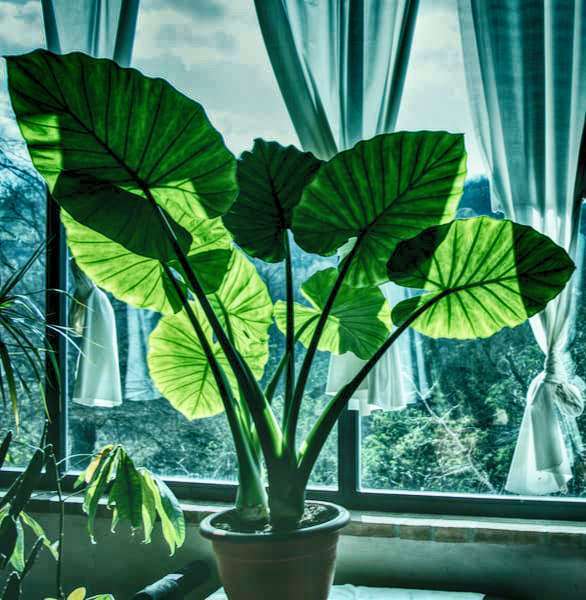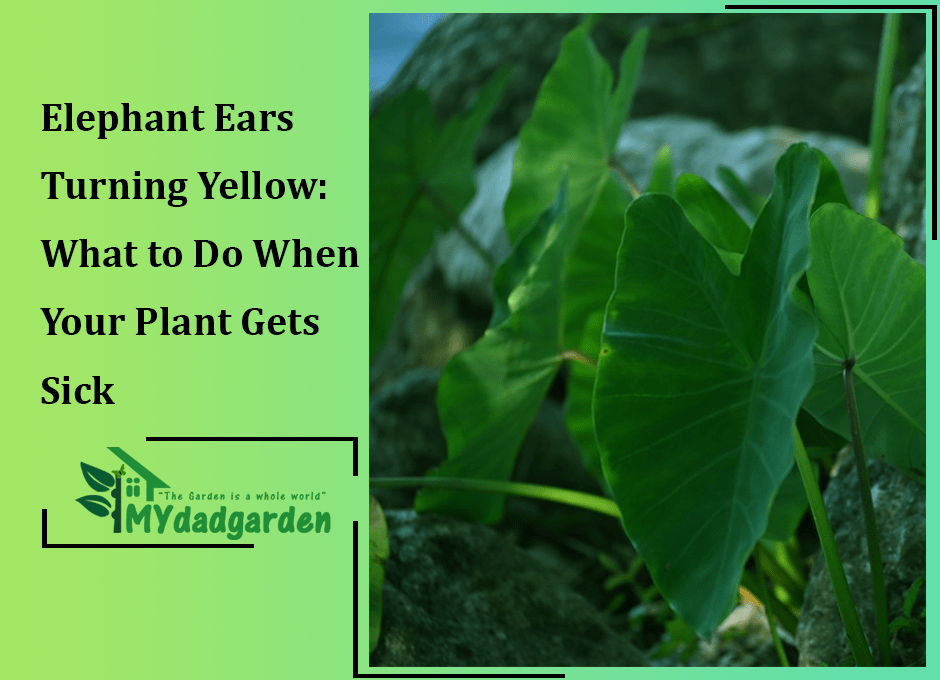Elephant Ears Turning Yellow: What to Do When Your Plant Gets Sick
If you’ve noticed that your elephant ear plant is starting to turn yellow, don’t worry – you’re not alone. This is a common problem for elephant ears, and there are several things you can do to help get your plant back on track. Here we will discuss the causes of yellow elephant ears and how to treat them. We will also provide some tips for preventing this problem from happening in the future.

Table of Contents
Causes Of Yellow Elephant Ears
Causes Of Yellow Elephant Ears
1. Sunlight
The most common cause is lack of sunlight. If you do not give your plant enough light, it will start to turn yellow and eventually die off completely if left untreated. The best way to prevent this from happening is by ensuring that there’s always plenty of direct sunlight hitting your plant
2. Watering
Another common cause of yellow elephant ears is too much or too little watering. Make sure to water your plant regularly, but don’t over water it. If the soil is wet for more than a day or two, you’re probably giving it too much water. On the other hand, if the soil is dry and cracking, you’re not giving it enough
3. Fertilizer
The fertilizer can cause your plant to turn yellow as well. Make sure you’re using the right kind of fertilizer for your plant and that it’s not old or expired. You may also want to try a different brand if none of these things seem like they’ll work out. There are many factors involved in fertilizing plants, so don’t be afraid to experiment and find out what works best for you.
4. Treatment
Once you’ve identified the cause of your plant’s yellowing, it’s time to start treatment. If the problem is due to a lack of sunlight, you can move your plant to a sunnier spot. If the problem is due to too much or too little water, adjust your watering schedule accordingly. And if the problem is due to a lack of nutrients, add fertilizer according to the instructions on your package.
If none of these treatments seem like they’ll work, it may be time to repot your plant into a larger container with fresh soil and new fertilizer. This will give you an opportunity for starting over from scratch if necessary.

How To Treat Elephant Ears Turning Yellow?
If you’ve noticed your elephant ear plant is turning yellow, don’t panic! There are a few different things you can do to help get it back on track and keep it healthy again.
Move the Plant Outside: Move the plant outside where it will get more sunlight, which helps keep plants green and healthy. You can also try moving it around throughout the day so that different parts of its leaves get sun exposure at different times.
Watering: Make sure you’re watering your elephant ear regularly (but not too much). This is important because when these plants dry out, they can start to turn yellow.
Fertilize: Add fertilizer to the soil according to the instructions on your package. This will help give your plant some of the nutrients it needs in order to stay healthy.
Repotting: If none of these treatments seem to be working, you may want to repot your elephant ear into a larger container with fresh soil and new fertilizer. This will give you an opportunity to start over from scratch if necessary.
How Do I Know If My Elephant Ear Plant Is Dying?
It’s hard to tell because the plant variety comes in many different sizes and shapes. But you can start by checking for any yellowing leaves, wilted leaves, and brown patches on the surface of the bulb (the “sheath”) around where the leaves emerge from the stem.
If those things are present on your elephant ear plant then it is definitely time to find a new one as this means that your current plant is either too big for its pot or it is root-bound. Root-bound plants grow faster than supplies with enough nutrients and they use up all of our good soil before we transplant them again!
To solve this problem, simply move your old potted elephant ear into a bigger pot or give it some fresh soil. Water it well and keep an eye on it to make sure the new growth is healthy. If you’re looking for a bigger elephant ear plant, then choose one that’s about twice the size of your current pot.
If your plant doesn’t have any of the above symptoms, but simply isn’t growing as big or lush as you would like, then you can try fertilizing it with some fertilizer or adding a little bit of water every so often.

Elephant Ear Turning Yellow After Repotting.
Elephant ear turning yellow after repotting may be due to a number of reasons. One reason may be that the plant is not getting enough water. Make sure to water your elephant ear regularly, especially if it is newly repotted.
Another possibility is that the potting soil you used does not have enough nutrients. Be sure to use a quality potting mix when repotting your elephant ear.
Should I cut off the yellow elephant ear leaves?
Elephant ear turning yellow after repotting may be due to a number of reasons. One reason may be that the plant is not getting enough water. Make sure to water your elephant ear regularly, especially if it is newly repotted.
Another possibility is that the potting soil you used does not have enough nutrients. Be sure to use a quality potting mix when repotting your elephant ear.
Should I cut off the yellow elephant ear leaves?
yes – you should cut off the yellow elephant ear leaves.
Why? Because it looks ugly! Your garden will look a whole lot better if you cut off the yellow leaves, so do that as soon as possible. If you don’t, then your garden will be full of brown and yellow elephant ears – which is not nice to look at.
How do you revive an elephant ear plant ?
It’s easy to revive an elephant ear plant – just water it! Make sure the soil is moist but not wet, and give it plenty of indirect sunlight. You may also want to fertilize it with a balanced fertilizer every month or so. Within a few weeks, your plant should be looking healthy and happy again!

Do elephant ears need full sun?
Elephant ears (Colocasia esculenta) are tropical plants that will grow well in full sun or part shade. In warmer climates, they will perform best in full sun, while in cooler climates they may do better with some afternoon shade.
As discussed above there are many reasons why elephant ears turn yellow, so don’t panic if you see this happening to your plant. By identifying the cause and treating it accordingly, you can help get your elephant ear back on track. For more information on how to care for your elephant ear plant, please visit our website or contact us today!
Previous Article: Sunflower with Multiple Heads: What To Do







